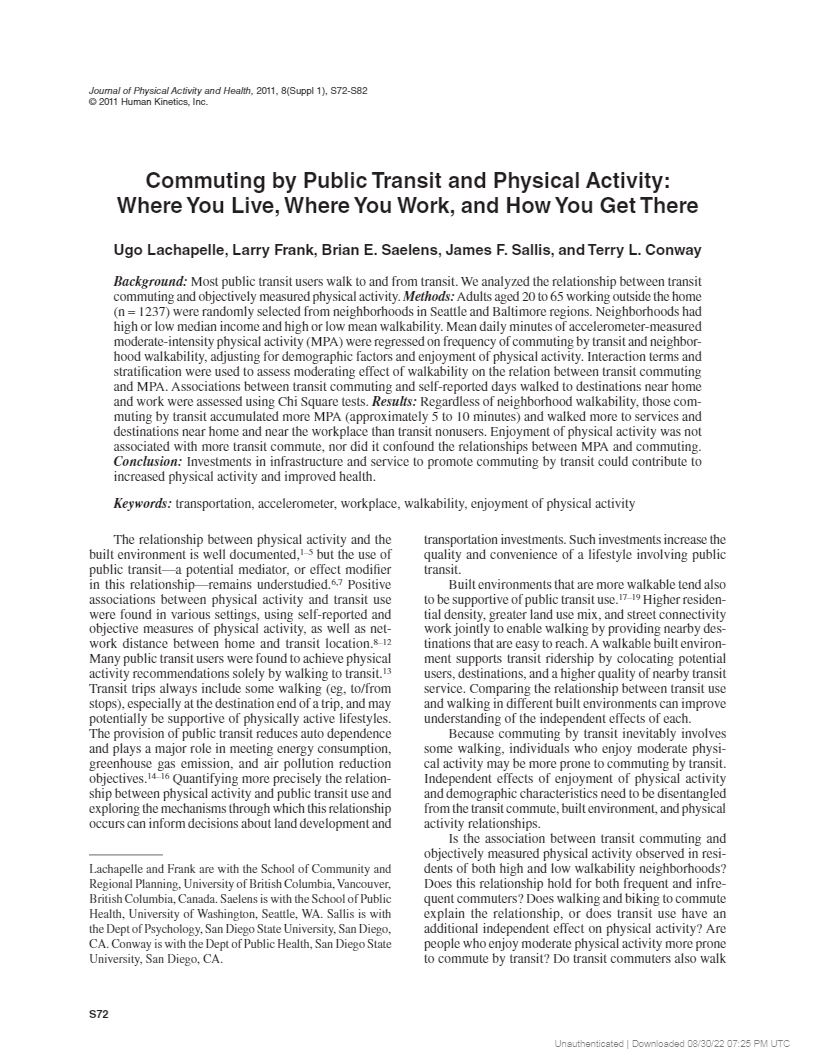Abstract
Background: Most public transit users walk to and from transit. We analyzed the relationship between transit commuting and objectively measured physical activity. Methods: Adults aged 20 to 65 working outside the home (n = 1237) were randomly selected from neighborhoods in Seattle and Baltimore regions. Neighborhoods had high or low median income and high or low mean walkability. Mean daily minutes of accelerometer-measured moderate-intensity physical activity (MPA) were regressed on frequency of commuting by transit and neighborhood walkability, adjusting for demographic factors and enjoyment of physical activity. Interaction terms and stratification were used to assess moderating effect of walkability on the relation between transit commuting and MPA. Associations between transit commuting and self-reported days walked to destinations near home and work were assessed using Chi Square tests.
Results: Regardless of neighborhood walkability, those commuting by transit accumulated more MPA (approximately 5 to 10 minutes) and walked more to services and destinations near home and near the workplace than transit nonusers. Enjoyment of physical activity was not associated with more transit commute, nor did it confound the relationships between MPA and commuting. Conclusion: Investments in infrastructure and service to promote commuting by transit could contribute to increased physical activity and improved health.
